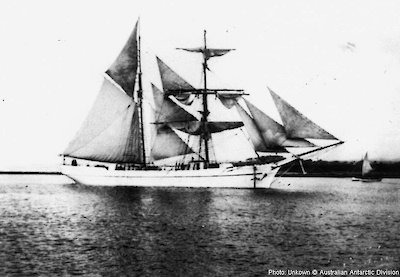Drawing together
‘Fifteen pounds of butter remained on the 20th’, recorded Ainsworth, ‘and I divided this equally, as it was now one of the luxuries.’ A telegraph advised that Rachel Cohen may not arrive for two months. ‘I answered, saying we could wait two months, but certainly no longer.’
The sealers were also waiting for Rachel Cohen. They moved to a hut at the north end of the Isthmus, ‘and frequently came over with their dog in the evenings to have a yarn. [Most of them] … had “knocked about” the world and had known many rough, adventurous years. One of them in particular was rather fluent, and we were often entertained from his endless repertoire of stories.’
Late in April flour was getting low, but the sealers had some to spare, so the bread ration of the AAE party was increased to 1.25kg a week. Oatmeal was even scarcer so through May and June the men started using a mixture of oatmeal and sago for breakfast, ‘of course without any milk or sugar,’ noted Ainsworth. Then the party’s best rabbit-catcher, their dog Mac, gave birth to six pups and had to be allowed leave from the hunt.
Despite a 10pm ‘lights out’, kerosene was now exhausted, so the party made do with ‘slush lamps’ fuelled by elephant seal oil.
Rachel Cohen had still not left Hobart by early July. Provisions were almost gone; the sealers too were short of supplies. A system of exchange sprang up between the two parties, trading food and other supplies — such as laxatives from the AAE medical supplies, used to combat the constipating effects of the elephant seal meat, or wheatmeal biscuits from the sealer’s large store.
‘We now had soup twice a day,’ wrote Ainsworth, ‘and managed to make it fairly thick by adding sago and a few lentils. Cornflour and hot water flavoured with cocoa made a makeshift blancmange, and this, with sago and tapioca, constituted our efforts towards dessert.’

